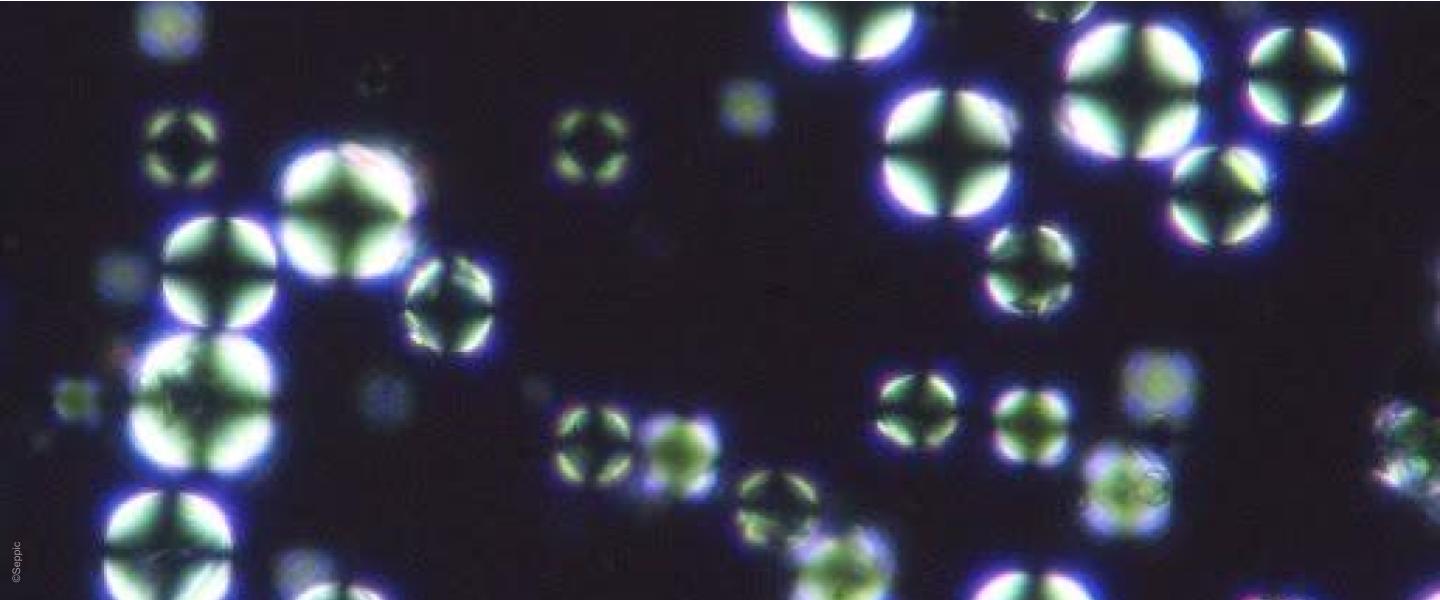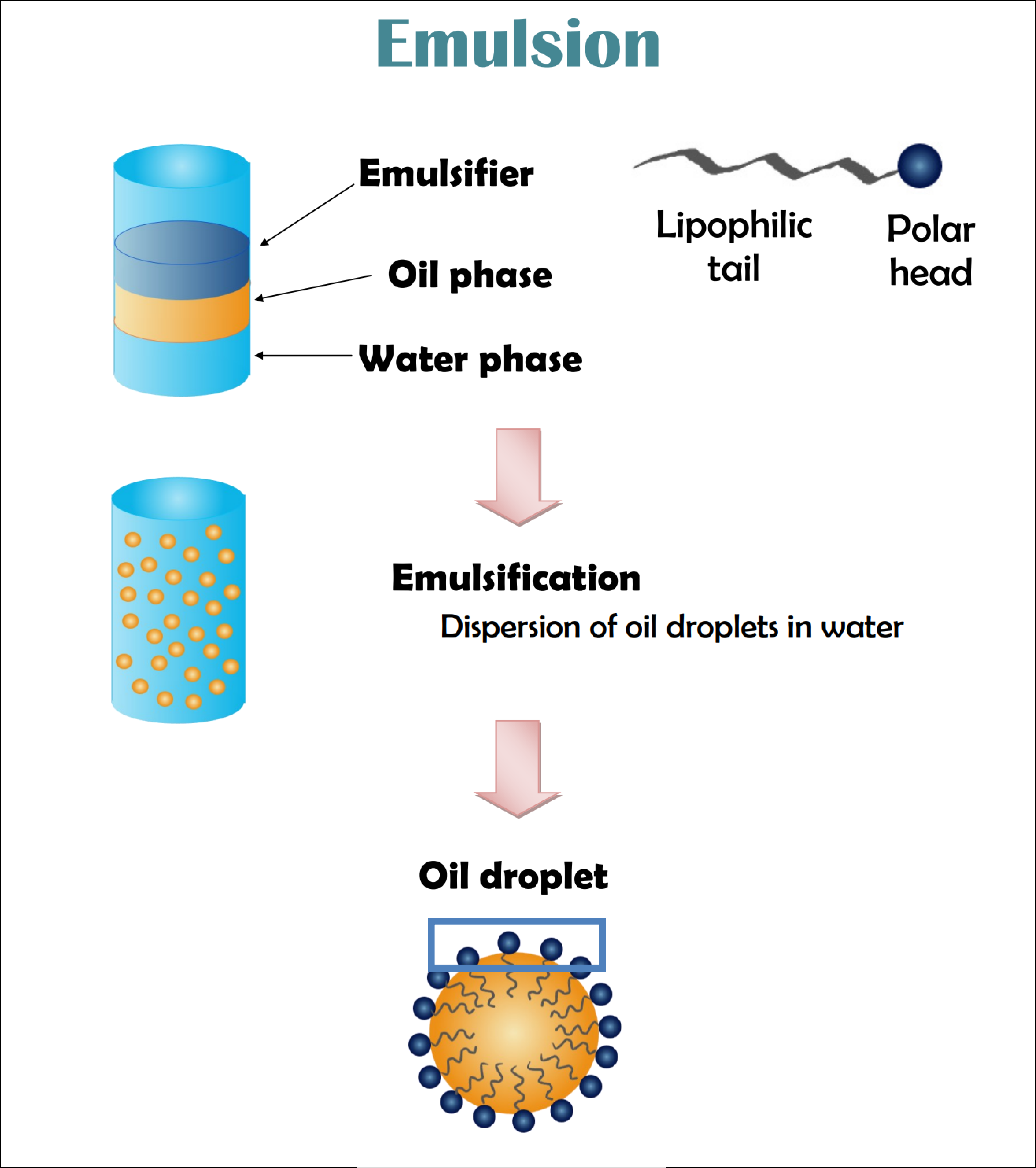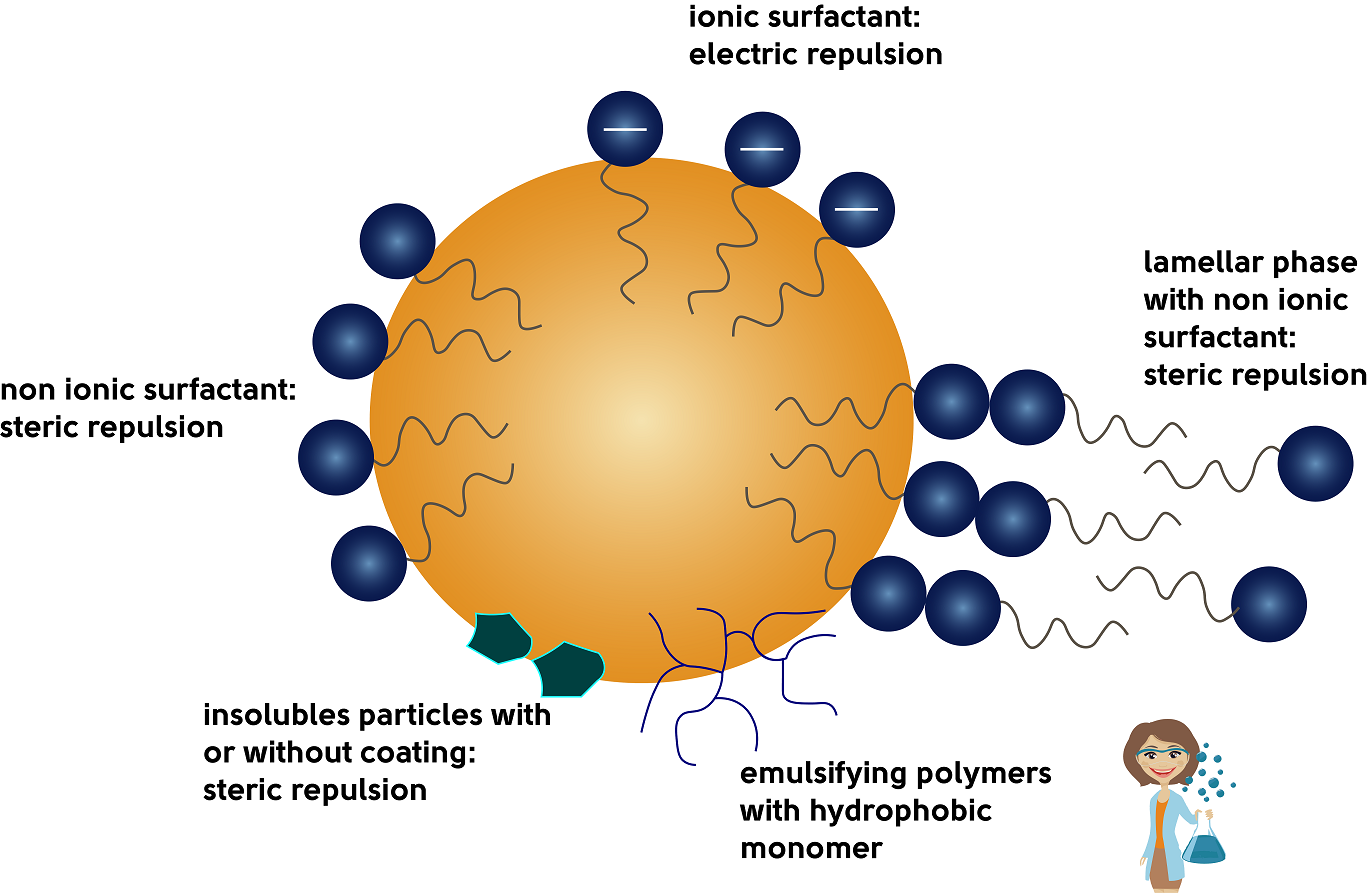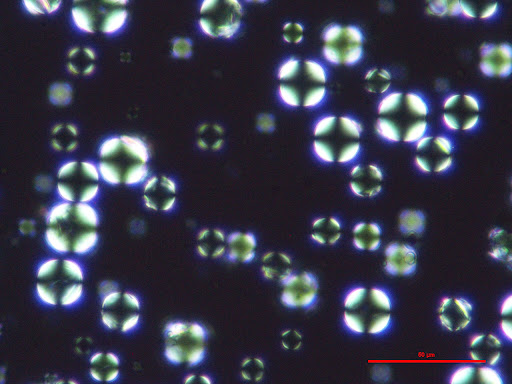
Liquid Crystals in Emulsions
April 15, 2022
The basics of lamellar emulsions
What is an emulsion ?
By definition, an emulsion is a stable dispersion of two or more liquids that are normally not miscible (think oil and water!)
Emulsions are formed when a third component that loves both oil and water is added: a surfactant (and a little agitation too!).

According to final arrangement of water and oil phases you can create different types of emulsions (depending on your emulsifier, your phases, your process etc…):
- Oil in Water, the most classic arrangement for skin care creams, where the water is the external, continuous phase, with oil droplets stabilized inside
- Water in Oil, where the oil is the continuous water
- Multiples W/O/W or O/W/O
- Foams,…
In O/W emulsions, the interface between the oil droplet and the water phase can be stabilized by different types of ingredients:

What are lamellar phases?
Some emulsifiers can create lamellar phase emulsions, by structuring the aqueous phase, and arranging themselves in bilayered sheets around the oil droplets. They can form a liquid crystalline phase, or a gel phase.

This lamellar phases formation can be seen:
- under cross-polarized microscopy, where cross-like structures (Maltese cross) are visible
- under electron microscopy, lamellar structures - like layers of sheets - are observed

Impact & Benefits of lamellar phase emulsions
Due to their organization, lamellar phase emulsions have multiple benefits in beauty formulations [1]:
- Emulsion stability, by increasing the elasticity of the emulsion, and creating a rigid shell around the oil droplets, preventing coalescence
- Product aspect and sensoriality: lamellar structure impacts the consistency of the product.
- Skin benefits: due to their organization similar to the intercellular skin lipids organization, lamellar emulsions strengthen and restructure the skin barrier, reducing TEWL and increasing skin moisturization, with a good compatibility with the skin.
Read more (opens new window) on the biomimetic emulsifier MONTANOV™ 202 and its benefits
Lamellar emulsifier range: Montanov™
The Montanov™ range is natural, non-ionic emulsifiers, made of optimized associations of sugars and fatty alcohols, linked with a stable bond.
They have the ability to create lamellar phase emulsions, with an exceptional stability, skin feel and skin benefits.
They can be used across a wide range of pH levels, are compatible with a wide range of oils, active ingredients, mineral charge and pigments,...
Which MONTANOV™ to use?
For a Rich skin feel: MONTANOV™ 68 MB (opens new window) (Cream to butter textures) or MONTANOV™ 82 (opens new window)(Spray to thick textures)
For a Light skin feel: MONTANOV™ 202 (opens new window) (Spray to thick textures) or MONTANOV™ L (opens new window) (Spray to butter textures)
Combine them for a diversity of textures and skin feels and optimum stability!
Formulation
MONTANOV™ can be added in the heated oily phase (or can be added to the water phase if the oil % is low). Add the oil phase to the heated water phase, and emulsify with a homogenizer (rotor stator). Cold gradually and gently to 50C, to allow the formation of liquid crystals. Finish the cooling with gentle to moderate stirring and add stressful ingredients at the end of the process.
View example video with MONTANOV™ L!
Want to try it out yourself? Ask us for a sample in the chat!
References
[1] Terescenco, D et al. “Influence of the emollient on emulsions containing lamellar liquid crystals: from molecular organization towards applicative properties.” International journal of cosmetic science vol. 40,6 (2018): 565-574. doi:10.1111/ics.12498. https://pubmed.ncbi.nlm.nih.gov/30303546/ - available upon request
Related tags